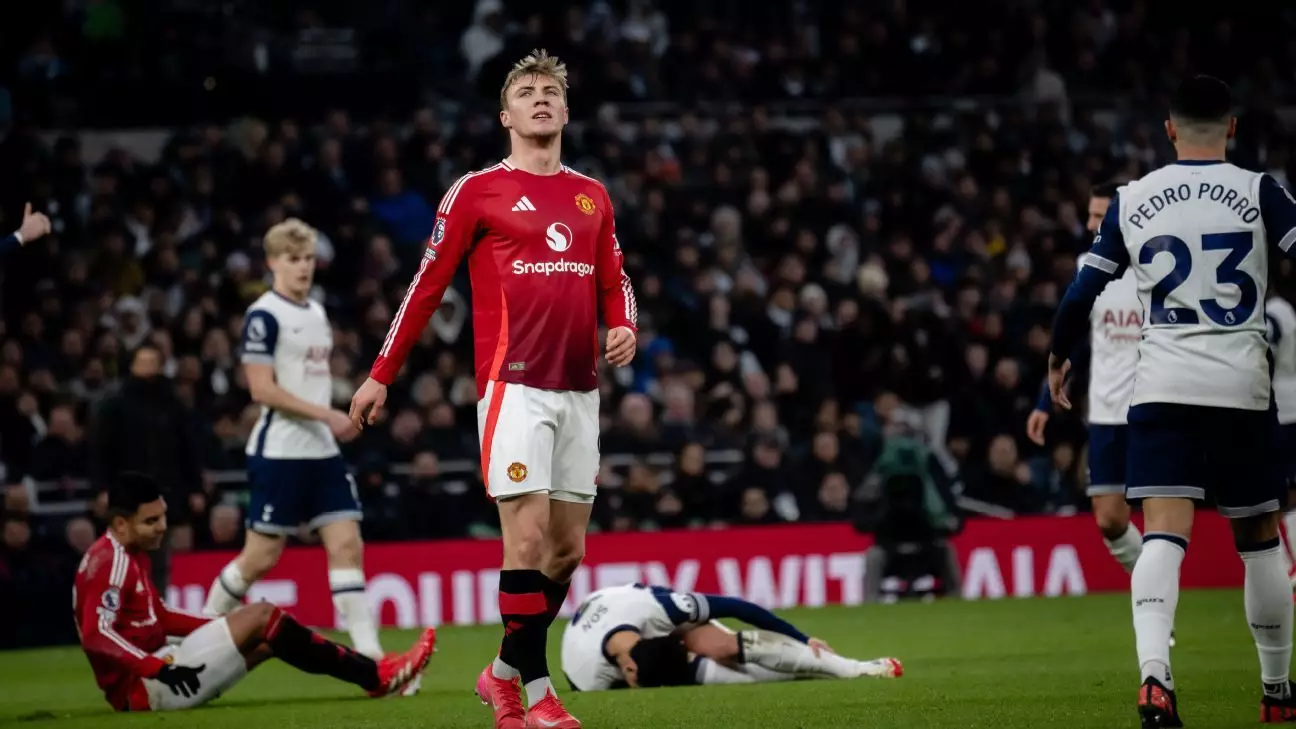In the competitive landscape of the Premier League, every striker faces the pressing dilemma of how often to shoot. Rasmus Højlund, the central forward for Manchester United, has sparked discussions among fans and analysts alike due to his striking statistics—or rather, the lack thereof. Despite being positioned as a key player in the attacking lineup, Højlund finds himself significantly trailing behind his peers in shots taken. This raises questions about not only his personal performance but also the broader tactical implications for Manchester United.
Recent statistics reveal a troubling reality for Højlund. With an average of merely 1.20 shots per 90 minutes, his output is underwhelming when juxtaposed with rivals like Erling Haaland, who boasts an impressive 3.82 shots per game. An analysis of outfield players shows that many, including defenders and midfielders, surpass Højlund’s shooting rate. This statistic vividly highlights an apparent inefficiency in United’s attacking play. The club has managed to net only 28 goals so far this season, with Højlund contributing a mere two of those—numbers that suggest a significant problem in their offensive strategy.
While shooting is just one aspect of a striker’s role, it’s a pivotal one. Højlund’s tendency to refrain from attempting more shots raises alarms about his aggressiveness in front of the goal. When compared to his contemporaries in other top clubs, the disparity becomes stark, prompting inquiries into whether this might be a consequence of his playing style or perhaps the team’s overall game plan.
It is critical to consider the systems under which Højlund has operated, especially as he transitions through different managerial regimes. Under Ruben Amorim, who previously excelled with a different striker at Sporting CP, the current setup seems to limit Højlund’s shooting opportunities. Viktor Gyökeres, the center forward under Amorim at Sporting, not only averages 4.59 shots per match but also has scored in abundance, illuminating the contrast with Højlund’s struggles.
Meanwhile, other players, such as Joshua Zirkzee, who operates under potentially unfavorable conditions, still manages a higher shooting average than Højlund. This raises further questions regarding whether Højlund has failed to adapt to the tactical demands placed upon him or if he simply is not being utilized effectively within the framework of the current squad.
Looking Beyond the Numbers
While Højlund’s shooting stats present a grim picture, it is essential to delve deeper into other dynamics affecting his performance. For one, he plays alongside Bruno Fernandes, who averages nearly three shots per match. This could inadvertently compress Højlund’s opportunities to shoot, as Fernandes often leads the offensive charge. Additionally, the role of an attacking forward is multifaceted; the likes of Roberto Firmino have demonstrated that contribution isn’t limited to goal-scoring alone.
Moreover, Højlund’s young age—having recently turned 22—suggests that he is still in a developmental phase. His career trajectory could very well see improvements in his confidence and overall performance as he gains more experience. Players at such an early stage often face challenges that come with transition periods, and better adaptability might enhance his scoring chances over time.
Addressing the evident issues surrounding Højlund requires a multipronged approach from both the player and the coaching staff. Højlund must channel this critique into actionable improvements on the pitch. Whether this means positioning himself more effectively to receive the ball, developing a stronger instinct for goal, or cultivating the confidence to attempt shots more liberally, he stands at a crucial crossroads in his career.
For Amorim, the task is to recalibrate United’s final third endeavors to create a more conducive environment for Højlund’s style of play. Should these factors remain unaddressed, Manchester United will have to contemplate seeking alternative striking options—players who can seamlessly integrate into the squad and elevate the team’s offensive output.
In summation, the question still looms: can Manchester United unlock Højlund’s potential, or is it time to explore other avenues? The future of their attacking strategy might depend on the answers to these pressing inquiries.
